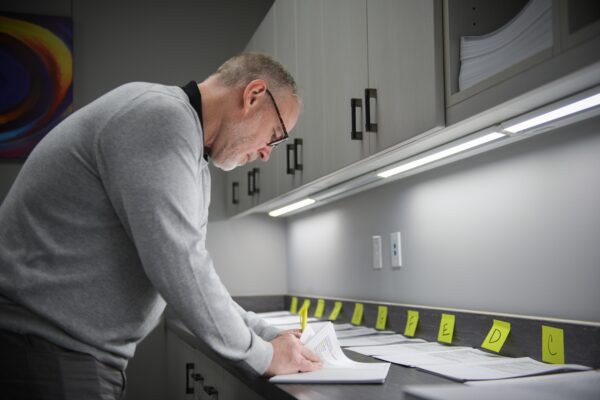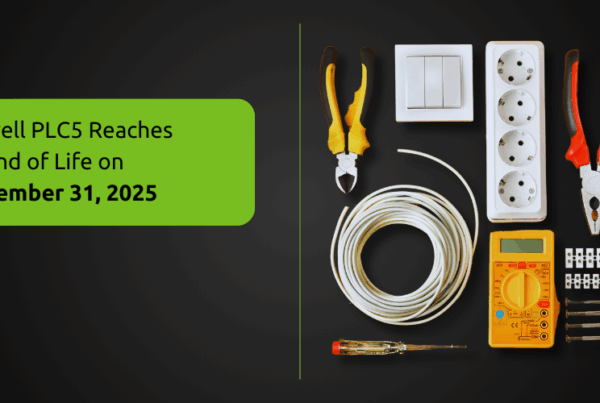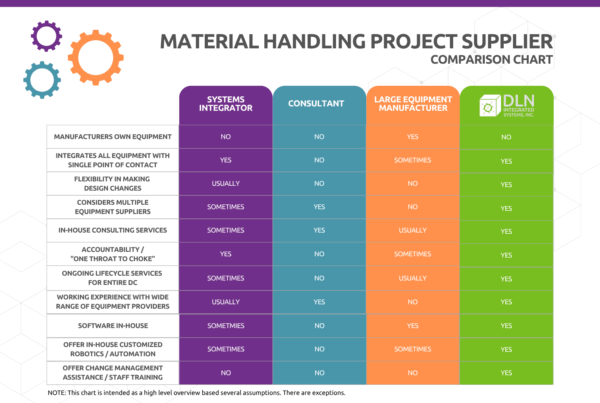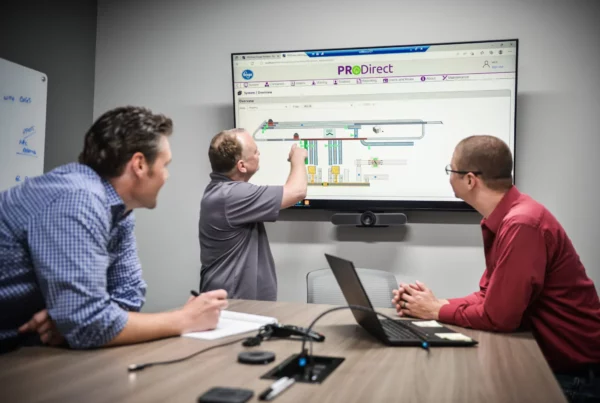 How to plan for distribution center upgrades with minimal downtime? Read on to discover how!
How to plan for distribution center upgrades with minimal downtime? Read on to discover how!
Leaders presented with a wide range of choices often fall into two predictable traps.
They either get overwhelmed by all the options, or they become quickly enamored with one solution while shutting out consideration of others.
In my opinion, neither of these extremes is ideal for decision-making, especially when it comes to deciding on enhancements to warehousing and distribution. These extremes can lead to snap decisions that don’t account for the most important needs.
Consider the scenario of a warehouse upgrade. Dramatic changes in systems and requirements over the past 10 to 15 years have transformed the way leaders need to pursue decision-making. There are so many new technologies to explore and the need to understand how each one integrates with existing systems has become even more important.
My goal is to nudge you away from either extreme and towards a more strategic or visionary approach to planning upgrades, including on the technology side.
Developing an overall plan for upgrading a distribution center should take priority over selecting the specific technologies to be used. Focus on the plan first, and the technologies second.
“Developing an overall plan for upgrading a distribution center should take priority over selecting the specific technologies to be used. Focus on the plan first, and the technologies second.”
The When, What and How of Effective Upgrades
 WHEN
WHEN
Signs that an organization needs to evaluate new technology include changes in order profiles or volume, shifts in SKU profiles, expansion into new channels or markets and growing limitations of an existing building or technology.
Delaying until you are in a crisis — is not the ideal timing for considering an upgrade.
 WHAT
WHAT
Leaders need to be willing to explore different approaches, from simple operation changes to detailed system integrations. Whether the goal is to make targeted technology upgrades or modernize a legacy warehouse, it’s important to consider best practices for performance metrics including speed, accuracy, assortment and cost.
If leaders get too focused on choosing a single technology, it may result in investing excessive time and costs with results that don’t line up well with the rest of the organization’s system.
 HOW
HOW
How organizations implement new technology needs to be fully thought out. Having an accurate understanding of your existing system is essential.
Leaders will be disappointed if the new technology is extremely difficult to integrate with the current system, takes operations offline for weeks, or shifts a problem to another area of the warehouse.
“It’s crucial to follow a strategic implementation approach that emphasizes phases of execution because this considers the real-time impacts on a working facility.”
The Need to Examine Multiple Angles
Once you know what systems, technologies, and workflows will be impacted by new technology, you need to take an even deeper dive.  This includes assessing various levels of system control and dataflow to know who is responsible for what. It also means determining whether documentation exists for current systems and whether your company has access to elements such as PLC code and scanner configurations to make changes to currently used technologies.
This includes assessing various levels of system control and dataflow to know who is responsible for what. It also means determining whether documentation exists for current systems and whether your company has access to elements such as PLC code and scanner configurations to make changes to currently used technologies.
For example, if the goal is to expand a picking area that requires a new divert off the sorter, it’s important to understand what drives the diverting — to avoid breaking or hindering dependencies during the expansion.
This research may require activities such as digging into logs or running test simulations. These activities may be time-consuming, but they can be supported by a strong internal engineering team or by third-party experts.
Ask yourself questions such as, can the upgrade be done without affecting operations? Can operations shift to a different workflow to make sections available for installation?
How to View ROI and Costs
No assessment is fully complete unless you have taken into consideration a project’s full ROI. When justifying the cost, it can be easy to lose sight of potential future costs. In addition, organizations need to watch out for changes that may have negative ripple effects on other parts of the project.  Conversely, improving one area may also benefit other processes upstream or downstream that are not directly changed and therefore can be easily overlooked in your ROI calculations.
Conversely, improving one area may also benefit other processes upstream or downstream that are not directly changed and therefore can be easily overlooked in your ROI calculations.
Here’s an important point when considering ROI: sometimes adding new technologies isn’t the best solution and upgrading existing technology can provide the best ROI.
It’s possible that some of a facility’s existing technologies are expandable and can be upgraded to provide needed functionality.
Real-World Example Illustrates Winning Approaches
Six Practical Ways to Look Before You Leap
 Eye Low Hanging Fruit
Eye Low Hanging Fruit
Sometimes a relatively simple change — such as switching out a scanner or conveyor — can be a good first step to solving a problem without needing to invest in more complex changes.
 Leverage Original Upgrade Plans
Leverage Original Upgrade Plans
Find out if your existing systems were designed with upgrades in mind, and if so, whether that opportunity still makes sense.
 Build on Existing Hardware
Build on Existing Hardware
Adding additional hardware to an older system, such as adding more robots, can lead to improved operations and lower risk, because you avoid changing the software or workflow.
 Explore Parallel Paths
Explore Parallel Paths
Consider adding a new system while maintaining use of a legacy one. This enables testing the new workflow before eliminating the old one — an important risk-mitigation move.
 Consider Dependencies
Consider Dependencies
Evaluate whether hardware or software changes might inadvertently disable existing systems. Try to ensure that improvements you make don’t eventually shift the problem to another upstream or downstream process.
 Think Out of the Box
Think Out of the Box
Explore innovative approaches to overcoming hurdles. As one example, a black box or man-in-the-middle approach can be employed when it’s desirable to maintain some existing systems to reduce risk to operations.
Relying on an Experienced Partner
Working with a trusted partner in assessing challenges and solutions increases the chances of success. Given the wide variety of solutions available, it’s important to solicit unbiased expertise to evaluate individual needs.
 DLN Integrated Systems is a specialist that is not locked into using specific brands of equipment or technology. It analyzes each situation uniquely and provides comprehensive integrated solutions using equipment and technologies from a range of manufacturers.
DLN Integrated Systems is a specialist that is not locked into using specific brands of equipment or technology. It analyzes each situation uniquely and provides comprehensive integrated solutions using equipment and technologies from a range of manufacturers.
This enables DLN to implement the most efficient and cost-effective solutions customized for each client. Let’s start the conversation!
About the Author
 Matt Verbrugge, Sr. Director of Technology
Matt Verbrugge, Sr. Director of Technology
Matt has almost 30 years of experience in the automated material handling industry with a deep background in controls engineering and warehouse software. He has direct experience in programming, integration, architecture, deployment, and post-launch support. Matt has implemented and supported numerous WCS/WES and/or control systems at 50+ customers and facilities.
Matt’s expertise extends to inventory control, order management process (allocation, cubing, waving, and workload balancing), as well as multiple fulfilment approaches such as cart picking, PTL software, carousel control, and robotics integration. He currently leads a team of 20 software, controls, robotics and project engineers.



